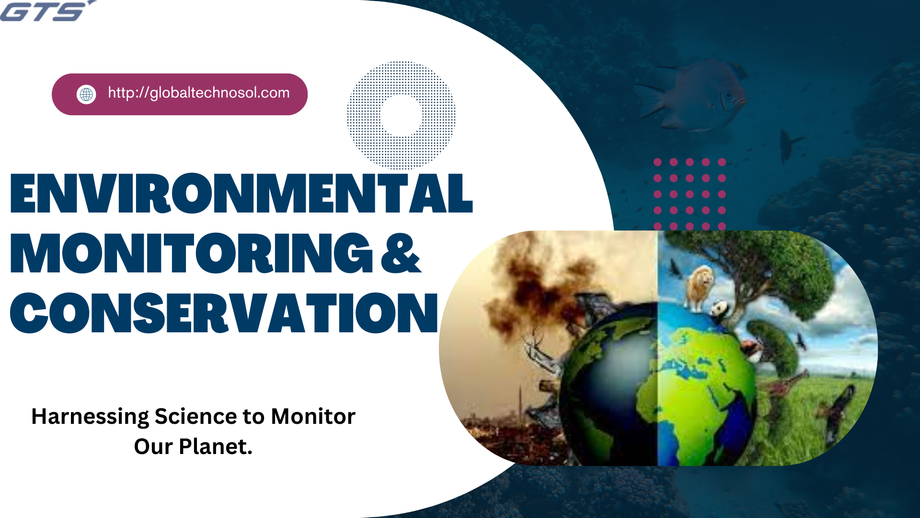Introduction
Environmental Monitoring & Conservation is essential for understanding and maintaining the health of our planet. In light of rapid industrialization, urban expansion, and climate change, it is imperative to employ scientific techniques and cutting-edge technology to observe environmental shifts, recognize potential hazards, and develop conservation initiatives. This blog delves into the scientific principles underlying environmental monitoring and its significance in protecting the future of our Earth.
What is Environmental Monitoring?
Environmental monitoring involves the organized collection and examination of data concerning air, water, soil, biodiversity, and climate. This process aids scientists, policymakers, and conservationists in making well-informed decisions to reduce environmental risks and foster sustainability.
Key Areas of Environmental Monitoring
- Air Quality Monitoring – Assesses pollutants such as carbon monoxide, sulfur dioxide, and particulate matter to evaluate air pollution levels.
- Water Quality Monitoring – Monitors contaminants in rivers, lakes, and oceans to ensure the safety of drinking water and the health of marine ecosystems.
- Soil Monitoring – Examines soil composition to identify degradation, contamination, and erosion.
- Climate Monitoring – Utilizes satellite data and meteorological instruments to analyze climate trends and forecast environmental changes.
- Biodiversity Monitoring – Tracks wildlife populations and habitat conditions to safeguard endangered species and ecosystems.
The Role of Technology in Environmental Monitoring
Technological advancements have revolutionized environmental monitoring, enhancing the accuracy and immediacy of data collection.
Technologies Enhancing Environmental Monitoring:
- Remote Sensing & Satellites – Offer extensive observations of deforestation, ice melting, and trends in air pollution.
- IoT Sensors – Provide real-time monitoring of air and water quality, facilitating the prompt identification of pollution sources.
- Artificial Intelligence & Big Data – Process large volumes of environmental data to forecast climate variations and natural disasters.
- Drones – Facilitate the assessment of remote regions for deforestation, wildlife monitoring, and ecosystem evaluations.
How Environmental Monitoring Aids Conservation
1. Pollution Prevention
Through the ongoing assessment of air and water quality, environmental monitoring plays a vital role in pinpointing industrial and human activities that lead to pollution. This enables governments and environmental organizations to implement regulatory measures aimed at reducing these threats.
2. Safeguarding Wildlife and Ecosystems
By observing biodiversity and habitat conditions, conservationists can take essential steps to protect threatened species. For instance, monitoring animal migration patterns aids in the establishment of wildlife corridors and conservation areas.
3. Addressing Climate Change
Information gathered from climate monitoring is instrumental for scientists in forecasting the impacts of global warming, rising sea levels, and severe weather events. Such data is essential for formulating strategies to lower carbon emissions and encourage renewable energy initiatives.
The Future of Environmental Monitoring
The domain of environmental monitoring is advancing swiftly, driven by innovations in artificial intelligence, cloud technology, and automation. In the near future, developments like blockchain for enhancing transparency in environmental data and 5G-enabled sensor networks will significantly improve real-time data gathering and analysis.
Conclusion
Environmental monitoring serves as the foundation of worldwide conservation initiatives. By utilizing state-of-the-art technology and scientific inquiry, we can gain a deeper understanding of environmental shifts, implement proactive strategies, and safeguard our planet for future generations. As we progress in innovation, the importance of environmental monitoring in fostering a sustainable future will only grow.
For practical examples, visit: Global TechnoSol Case Study.

Comments on “Protecting Our Planet: The Science Behind Environmental Monitoring”